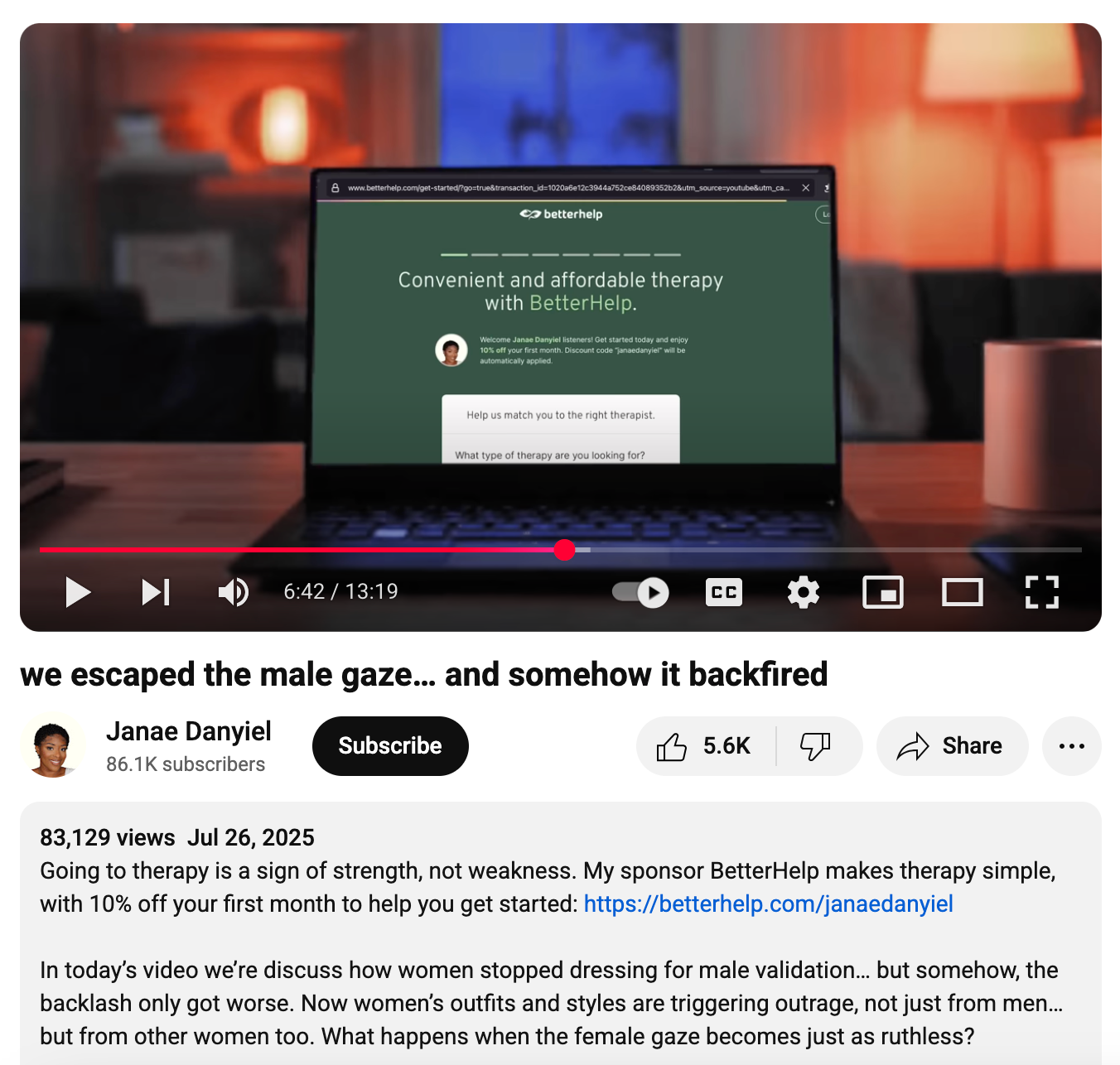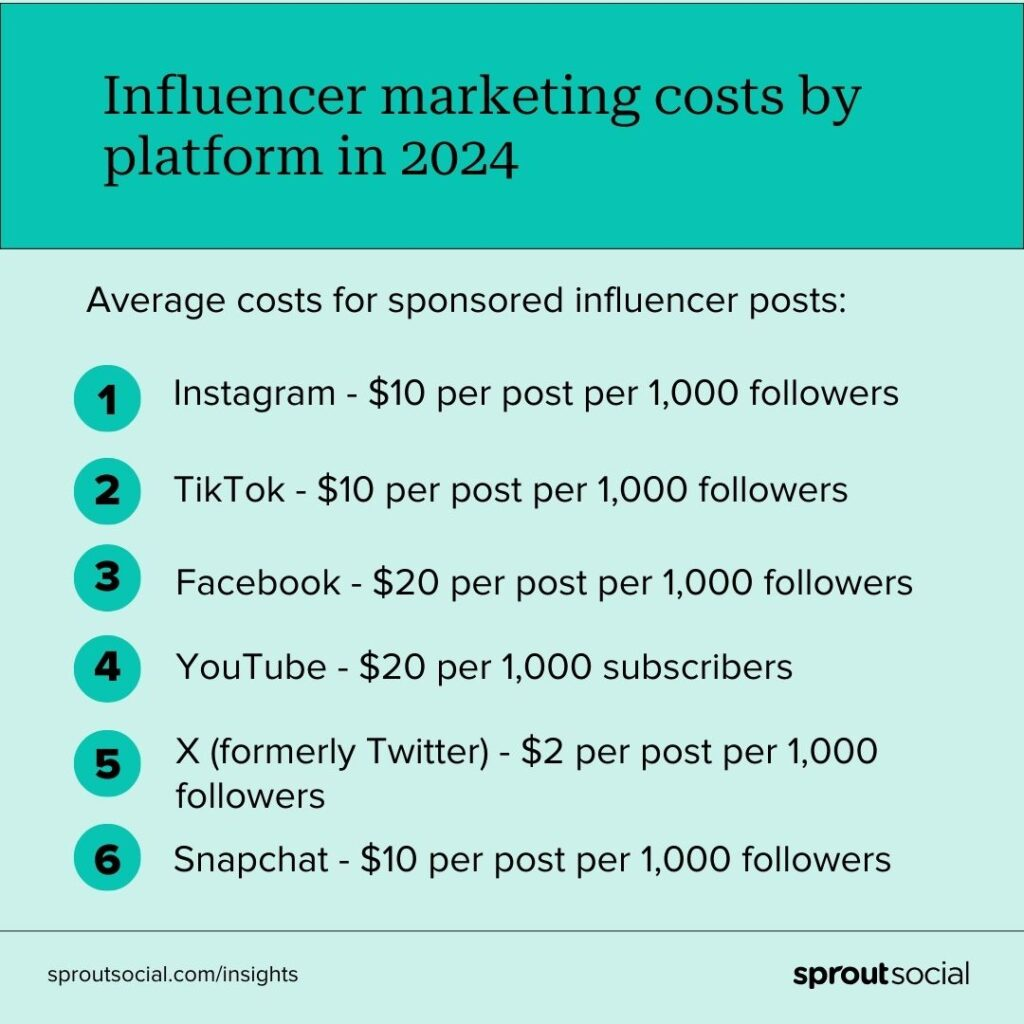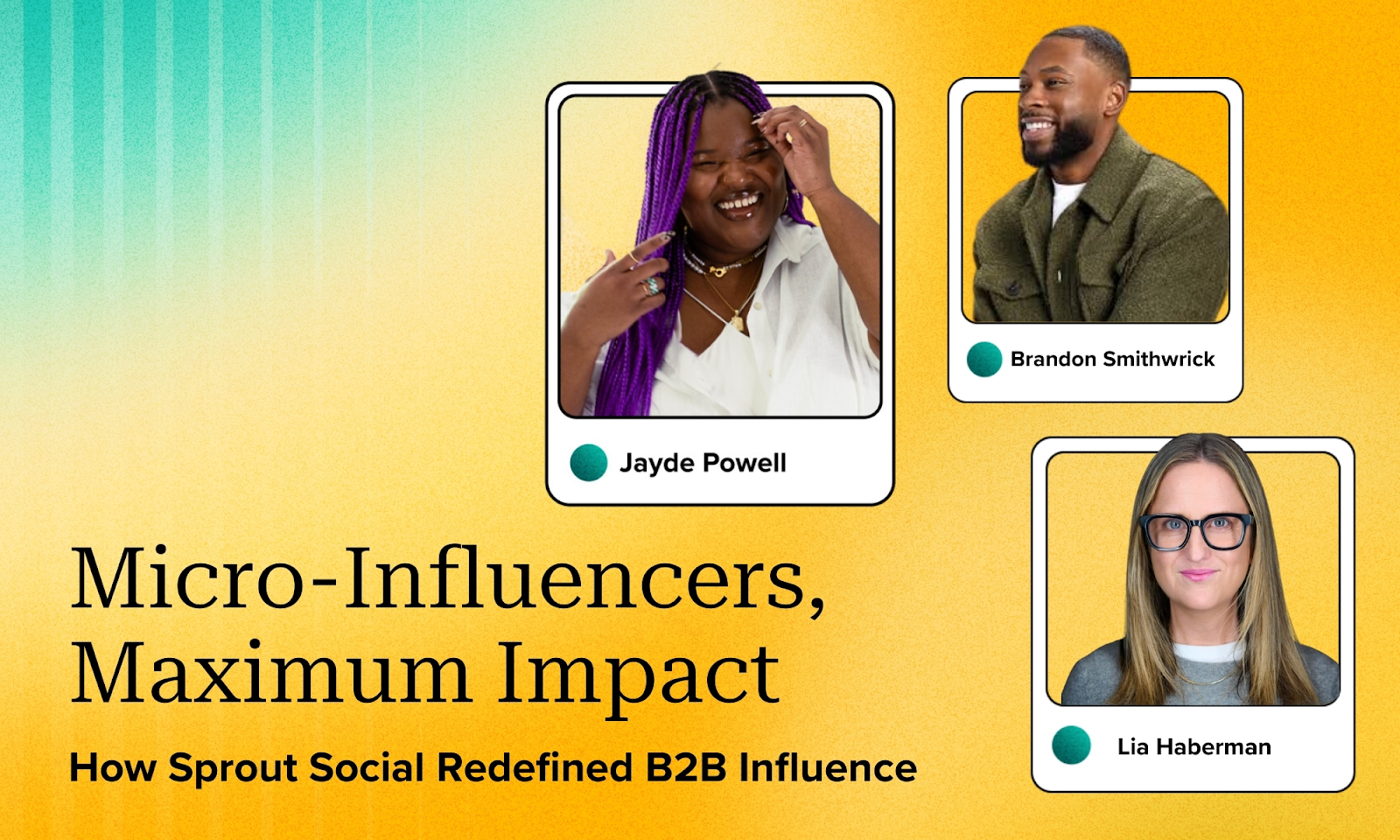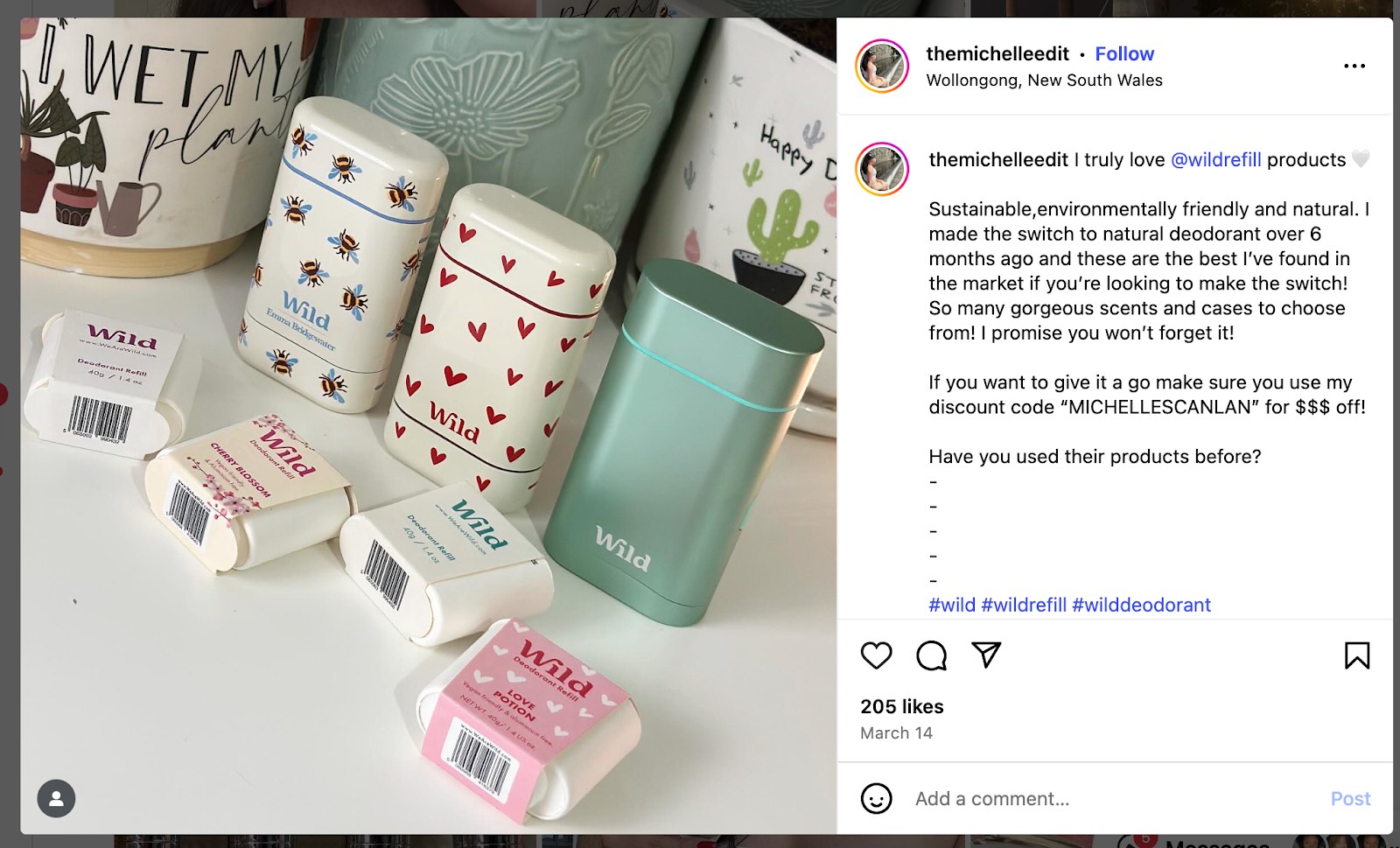Micro-influencer marketing is having a moment—and for good reason.
The influencer marketing rules are changing and real influence doesn’t always come with a million-plus following.
Big-name collabs still have their place, but consumers care more about what influencers say and their overall presence than how many followers they have.
According to our 2024 Influencer Marketing Report, 58% of daily or weekly shoppers say posting frequency matters more than follower count.
But is the ROI strong enough? Are micro-influencers worth the cost? How do they stack up against nano or mega influencers?
In this article, we’ll explore what micro-influencer marketing is, why it’s worth your attention and how to partner with these creators effectively.
What is a micro-influencer?
A micro-influencer is an influencer with between 10,000 and 100,000 followers—like YouTuber Becca Becca or Taylor of the @TheGirlOnBloor. They may not have celebrity status like the Mr. Beasts or IShowSpeeds of the world, ut they’ve built highly engaged communities, typically around specific interests like clean skincare or minimalist interiors.
Their reach is broad enough to make an impact, but still small enough to feel personal. That sweet spot often translates to higher engagement and more authentic interactions compared to macro or mega influencers.
Think of it like this: If influencer marketing were a music festival, macro and mega influencers would be the headliners. Nano-influencers would be the talented buskers playing just outside the gates. And micro-influencers are the fan-favorite acts on the side stages. Still drawing a solid crowd and often the ones people leave talking about.
Why micro-influencers are valuable partners
There are several benefits to working with micro-influencers that your brand should consider. We’ll walk you through those benefits and cover why they’re a valuable part of your marketing strategy.
Micro-influencers are cost-effective
When it comes to influencer marketing, bigger doesn’t always mean better for your budget.
Most platforms follow an average influencer pricing benchmark of $10–$20 per post per 1,000 followers, with rates varying by content type and channel.
That means a micro-influencer with 25,000 Instagram followers might charge around $250 for a static post and likely more for Reels or multi-post packages. TikTok and YouTube posts tend to cost more, while X and Facebook are typically more affordable.
In comparison, an Instagram mega-influencer with 1 million followers may charge $10,000+ for a single post.
With a lower cost per post, micro-influencer marketing gives brands the flexibility to:
- Work with multiple creators to reach different audiences or regions
- Test content formats across platforms before investing in a larger campaign
- Negotiate based on your needs, timeline and goals
Micro-influencers have higher engagement rates
Because micro-influencers have a much more intimate audience than macro-influencers do, they often see a higher engagement rate. This means that their posts are reaching a higher percentage of their followers, and a lot more of the people seeing their content are engaging with it (i.e., liking, commenting, sharing).
Instagram micro-influencers have an average engagement rate of 0.99%, the highest across all influencer tiers, including celebrities. That might sound like a small number, but it reflects a larger trend—as follower count goes up, engagement typically goes down.
For brands, this matters. When you’re looking to build trust, spark conversations or drive conversions, a smaller but more responsive audience is often more valuable than a massive but passive one.
Micro-influencers have a more targeted or niche audience
Micro-influencers often target niche communities, which is helpful for tapping into a more specific audience that’s interested in your product. For example, you might partner with a cake-decorating influencer to promote your new line of piping tips, or a Dungeons and Dragons influencer to spotlight your new Dungeon Master kit.
This level of targeting helps ensure your product ends up in front of the right people (i.e., the ones most likely to click and convert).
Micro-influencers build trust and authenticity
Micro-influencers often feel more like friends than celebrities, sharing everyday content that’s relatable and personal. Whether they’re posting honest skincare reviews or sharing behind-the-scenes of a work-from-home day, their content resonates because it feels real.
That genuineness is exactly what consumers are looking for. According to our 2024 Influencer Marketing Report, the top qualities people care about are authenticity in influencer marketing and shared values—even in sponsored content.
By partnering with micro-influencers who genuinely connect with your product or mission, brands can tap into that ready-made trust. It’s like getting a word-of-mouth recommendation from someone your audience already knows and respects.
How to find micro-influencers
Finding the right micro-influencer starts with knowing where and how to look. Here are a few smart strategies to help you discover your perfect match.
Use a discovery tool
Finding the right influencer can feel like searching for a needle in a haystack. But the right tool makes that search a whole lot easier.
For example, with Sprout Social Influencer Marketing you can discover brand-aligned influencers using AI-powered, topic-based search. This enables you to find micro-influencers, who are often tougher to surface through manual search. You’ll also get detailed data to vet brand fit, assess audience demographics and ensure brand safety.
Our Influencer Marketing platform also wonSilver for Best Influencer Marketing Platform at the 2025 Global Influencer Marketing Awards. It’s a meaningful endorsement from a panel of industry experts, underscoring Sprout’s commitment to innovation and effectiveness.
As you evaluate potential partners following a thorough influencer vetting process, here are a few key things to look out for:
- Topical alignment and engagement: Do they consistently talk about topics related to your brand and that your audience cares about? Is their content style and tone a match for your brand? This is something you can easily find out with Sprout’s IM platform.
- Authenticity: Does the partnership feel like a natural fit? A brand-fit score, like you can find in Sprout, enables you to evaluate if the partnership is on the same plane.
- Experience with branded content: Have they worked with similar brands, or even your competitors?
- Audience demographics: Do their followers match your target audience in age, location and interests?
- Brand safety: Does their content and online presence reflect your values?

With the right discovery tool in place, you’ll spend less time guessing and more time building the impactful influencer partnerships for your brand.
Schedule a demo to see it in action.
Find noteworthy voices with social listening
Your best potential influencer partners might already be talking about your brand and the topics your audience cares about.
Sprout’s Social Listening enables you find these people by tracking millions of real-time conversations across platforms. It also enables you to build custom queries to uncover niche authorities who are generating meaningful engagement in your space.
Identify high-impact micro-influencers and rising thought leaders you might otherwise miss.
Look at competitors’ influencer partnerships
Analyzing other brands in your space (especially those targeting similar audiences) enables you to see the creators they’re partnering with and build a shortlist of your own.
Our competitive analysis tools simplify the process, helping you track top-performing posts, hashtags and conversations across your industry. There are also options to filter by brand, content type or sentiment to spot emerging trends and standout influencers.
Use search engines
Now that search engines are indexing social content, using Google to find influencers is a lot more straightforward. For example, a quick search for “Toronto content creator” brought up @thegracearhin—a lifestyle micro-influencer with over 12K followers.
Pair that with influencer marketing resources like Sprout’s blog, which offers curated lists by niche, location and platform, and you’ve got a solid starting point for finding influencers who align with your brand.
How to create a micro-influencer strategy (and work with them)
If you’re interested in starting your first influencer campaign by working with micro-influencers, we’ve got the ideal five-step process for you.
Here’s how to work with micro-influencers and see success in your campaigns.
1. Pinpoint your goals and create a brief
As with any new marketing campaign, the first step in your micro-influencer strategy is defining your goals. What are you hoping to achieve? That clarity will shape who you work with, what kind of content they create and how you measure success.
Common influencer marketing goals include:
- Increasing brand awareness
- Increasing brand mentions or engagement
- Growing your social media following
- Driving more website traffic
- Generating leads or sales
Your goals may change over time. For example, your first campaign might focus on building brand awareness, while future partnerships aim to drive conversions.
Once you’ve defined your goal, translate it into a clear, concise campaign brief that outlines:
- Your objective (e.g., drive 20% more traffic to your product page)
- Key messages or product features to highlight
- Content format(s) and platform(s)
- Timeline and deliverables
- Brand voice and visual guidelines
- Performance metrics you’ll use to measure success
A strong brief gives creators the direction they need, while still giving them creative freedom to speak authentically to their audience.
2. Create a contract and determine compensation
A brief gets the ball rolling, but a contract keeps things on track.
Your influencer contract should outline:
- Scope of work: What content the influencer will create, and where you will share it.
- Compensation and payment terms: What you’ll pay and when.
- Usage rights and ownership: How your brand can repurpose the content.
- Compliance and disclosure: Required FTC guidelines and platform rules.
- Confidentiality: How you’ll keep sensitive campaign details private.
- Performance metrics and reporting: How you will measure success.
- Terms and termination: Campaign duration and how either party can exit.
Speaking of compensation, here are some standard models to consider:
- Flat fee: Guaranteed payment up front. Easy to budget, but sales aren’t guaranteed.
- Commission-only: Pay per sale. Low risk for brands, high risk for creators.
- Hybrid: Upfront fee plus commission. Balances predictability and performance.
- Product exchange and commission: Great for newer influencers. Still offers value even if sales don’t happen.
Whether you’re working with one micro-influencer or many, setting expectations early through clear contracts and fair compensation is key to building long-term, trusted partnerships.
3. Create and collaborate with micro-influencers
Once your goals and contract are in place, it’s time to bring your campaign to life. That starts with deciding which platforms and content formats make the most sense for your brand and target market.
Influencers know what resonates with their audience and how to communicate with them in a genuine way. So instead of handing them a rigid script, share your key messages, brand guidelines and ideas, but leave room for creative freedom.
Some content ideas you can include in your brief:
- Unboxing videos featuring gifted products
- Branded storytelling Instagram carousels
- A giveaway to boost engagement
- Short-form videos for TikTok, Reels or YouTube Shorts
- Affiliate codes to drive trackable sales
- Branded hashtag challenges
- X threads featuring thoughtful commentary
To keep things on track (and on brand), build in review checkpoints. Request content drafts or outlines before publishing to make sure the tone, messaging and visuals feel consistent with your brand’s voice and values.
It’s all about finding the sweet spot. Give micro-influencers the creative freedom to do what they do best, while making sure the content still supports your goals and presents your brand in the right light.
4. Coordinate campaign execution with the influencer
With content approved, the next step is teaming up with your micro-influencer to launch and support the campaign.
Work together to set a posting schedule and decide how your brand will show up during the campaign. Will you comment on their posts? Reshare their content? Post companion content from your brand account? These touchpoints help reinforce the message and boost visibility.
Behind the scenes, set up tracking to monitor performance and optimize future campaigns.
5. Measure performance and seek feedback
Experienced marketers know: what gets measured, gets optimized.
Use a tool like Sprout Social Influencer Marketing to track performance across channels. With features like modular summaries, custom report builders and link tracking, you’ll get a clearer understanding of your campaign’s impact: from reach and engagement to clicks and conversions.
Don’t forget to check in with your micro-influencer, too. Their feedback can offer insight into what worked for them and what didn’t. Audience sentiment in the comments can also help you gauge how the content landed.
Examples of micro-influencer marketing
Looking for real-world inspiration? These micro-influencer marketing examples show how brands across industries are partnering with micro-influencers to drive results.
Sprout Social’s center of excellence model
In 2024, Sprout Social proved B2B brands can leverage influencers successfully with our ‘center of excellence model’ that positioned micro-influencers as strategic partners, not just content amplifiers.
Of the 32 creators we worked with, 28 were micro-influencers, embedded across webinars, events, reports and social campaigns. This always-on approach drove 4M+ impressions, 100K+ engagements, 600+ leads and won us a Shorty Award.
Wild
By partnering with micro-influencers like @themichelleedit, a beauty and personal care creator with 27K+ followers, Wild, a UK-based personal care brand, taps into trusted voices to promote its natural deodorant.
In a sincere Instagram post, the Australian influencer shared why she loves Wild’s refillable product, calling out its natural ingredients, eco-friendly packaging and wide range of scents.
By giving Michelle a unique discount code, the post works as both high-quality UGC and a performance-driven campaign.
BetterHelp
BetterHelp, an online therapy platform, is well-known for its influencer marketing, especially across YouTube and podcasts. One standout micro-influencer marketing partnership is with Janae Danyiel, a commentary YouTuber with 87K+ subscribers known for her smart, unfiltered “girl talks with depth.”
In her video descriptions, Janae shares a direct, values-driven message: “Going to therapy is a sign of strength, not weakness,” alongside a custom link and discount for BetterHelp. The promotion blends seamlessly with Janae’s content and speaks directly to her community of women navigating young adulthood.

Start your micro-influencer marketing strategy
Reaching the right people often matters more than reaching the most people. That’s where micro-influencers come in.
Want to connect with plant-based parents on Instagram? Or a DIY-er that builds custom furniture? Micro-influencers can help you reach those audiences at scale, with sponsored content that feels more personal than promotional.
Sprout Social Influencer Marketing can help you find the right partners for your campaigns, monitor industry conversations and track campaign performance—all in one place.
Schedule a demo today to see for yourself.
The post Micro-influencer marketing: What it is and how to do it right appeared first on Sprout Social.





